The Seasonic PRIME Titanium PSU (650W, 750W, 850W) Review: Mythical Performance
by E. Fylladitakis on April 7, 2017 9:00 AM ESTExternal Appearance
The three Seasonic PRIME PSUs that we are reviewing today are almost identical physically, sharing the exact same design and proportions. One can only tell the difference between the models from either the sticker with the electrical specification of the PSU that is found at the top of the chassis, or from the number of connectors at the front side of the units. Do note that the chassis is 170 mm long, which is a bit longer than that of a typical ATX PSU and might be incompatible with some cases, especially ultra-compact designs.
Seasonic is trying to have the PRIME units aesthetically standing out of the crowd mainly by adding chrome parts on the sides and bottom of the chassis. Aesthetics are a subjective matter but we believe that the designer made the PRIME units a bit too shiny, when obviously the concept was to have them looking classy. The sides of the chassis are embossed, with a small vent opening that faces the rear of the unit. These vents are insignificantly small and their direction suggests that they are most likely just decorative elements rather than actual thermal improvements.
The rear side of the PSUs is perforated, with an elongated honeycomb pattern that has been optimized for reduced air drag (i.e. noise). There is a typical on/off switch next to the AC cable connection, and also a push button that turns the hybrid fan mode on or off. With the setting on, the fan will not start until the thermal control circuit defines that it is necessary for the cooling needs of the unit.
The front side of the PSUs are littered with the numerous connectors for their modular cables. Each unit has a different number of connectors that corresponds exactly to the number of cables they come with. The connectors are grouped into three categories; one just for the ATX cable, one for the Molex/SATA cables and one for the PCI-E and CPU cables. All of the PCI-E/CPU connectors are compatible with both of the CPU and PCI-E cables.
Internal Design
All three of the units that we are reviewing today are using the same exact fan, the Hong Hua HA13525M12F-Z. It initially appears to be a common 135 mm fan but has a fluid dynamic bearing (FDB) engine, which combines the low noise operation of the sleeve bearing with the longevity of ball bearing engines. The fan has a maximum rotational speed of 1800 RPM.
Seasonic is the designer and a manufacturer that actually also supplies their products to other brands, so there is no hidden OEM behind the PRIME Titanium units, they are entirely of their own design and production. The three PRIME Titanium units that we are reviewing today are also sharing the same exact internal design. As a matter of fact: many of the components are identical, with the only actual difference being the rating of some of the primary components. The heatsinks are identical, as are most of the secondary side capacitors.
The secondary capacitors are either supplied by Nippon Chemi-Con and Nichicon (Solid state), or Nippon Chemi-Con and Rubycon (electrolytic). The filtering stage also is identical between the three units and consists of six Y capacitors, three X capacitors and two filtering inductors. A surge suppressing MOV is also present. All three units are even using the same two primary conversion bridges, which are comically oversized for the power requirements for any of the three units. The two bridges in each of the units could, in theory, handle up to 4.5kW with a mere 90V AC input. Differences occur with the two APFC capacitors at the primary side: the 650W model is using 2×400V/470μF capacitors, the 750W model one uses 400V/450μF plus one 400V/560μF, and the 850W model uses one 400V/470μF plus one 400V/680μF.
Seasonic PRIME Titanium 650W - Internal View
Technologically, the topology of the PRIME units is not alien by any of today’s standards. The primary inversion stage is a full bridge supported by an LLC resonant converter, and the secondary conversion stage is a synchronous rectifier that generates the 12V line, with DC-to-DC circuits for the secondary voltage lines. Seasonic managed to reach 80Plus Titanium efficiency standards simply by the proper selection of high quality active parts that have minimal thermal losses and cooperate well with each other. The flip side of this is the cost, which we will get to later.
Seasonic PRIME Titanium 750W - Internal View
Seasonic PRIME Titanium 850W - Internal View


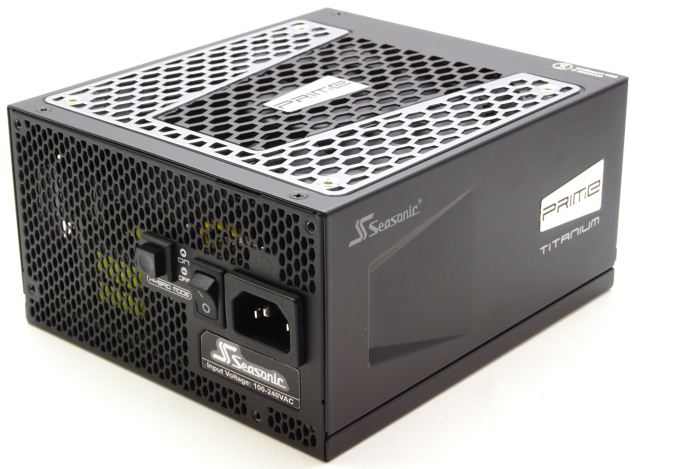
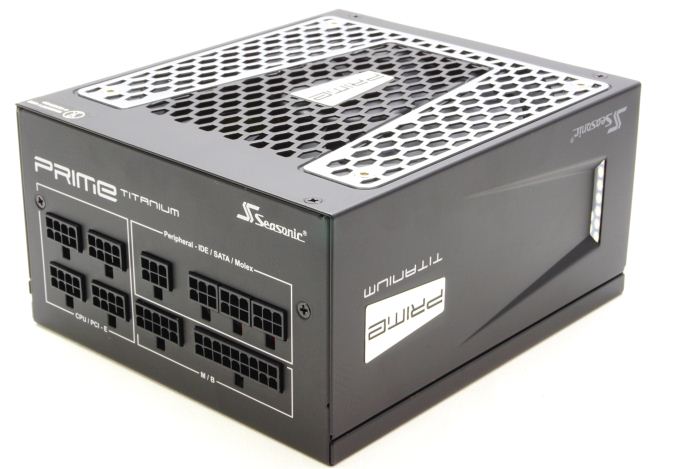
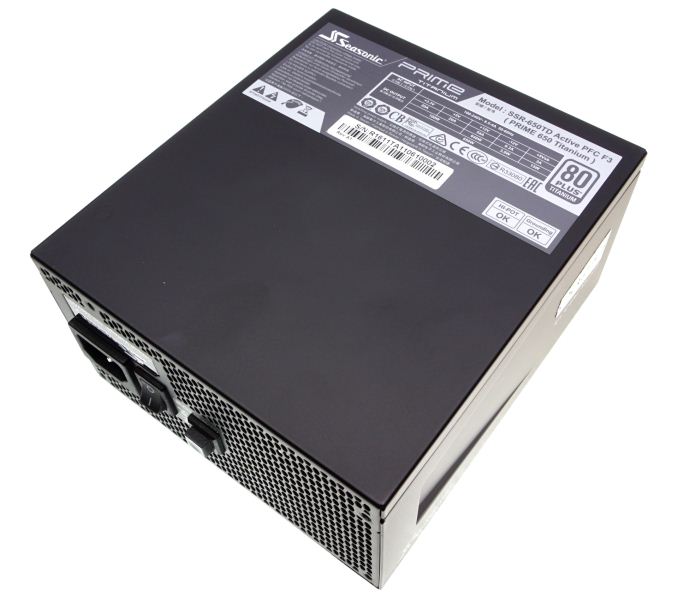

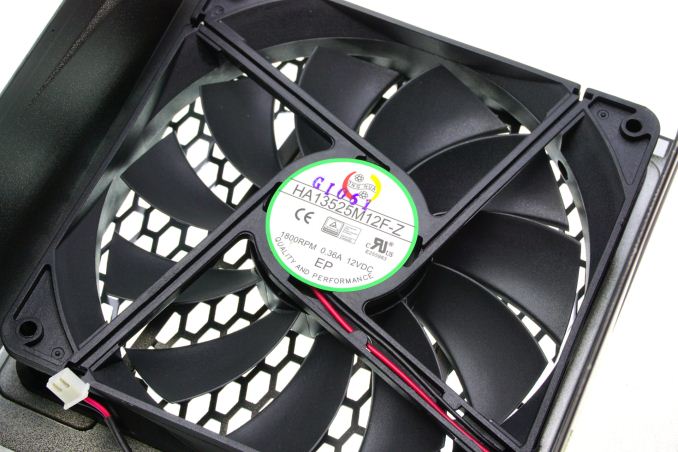
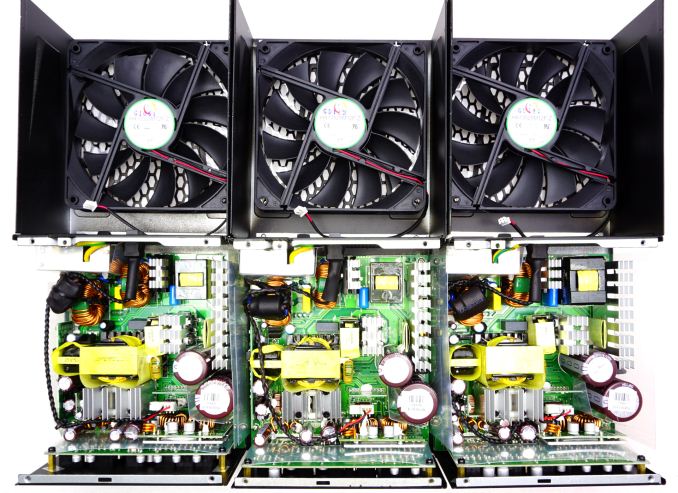
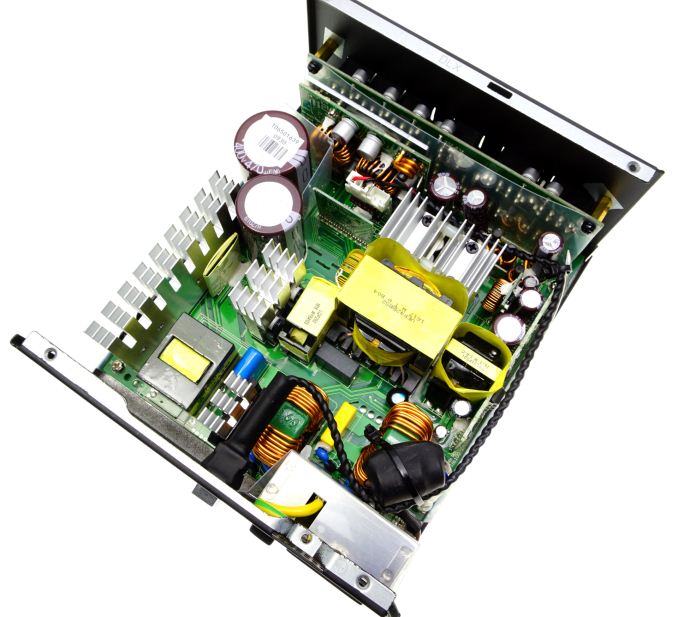
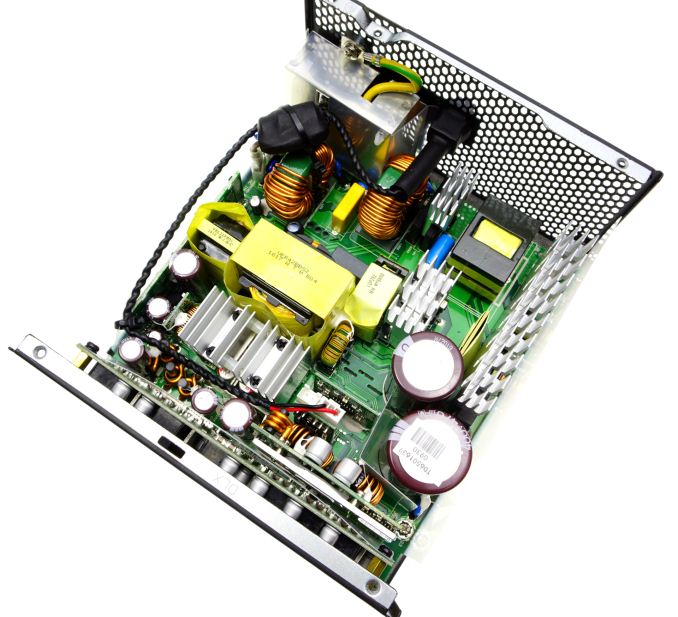
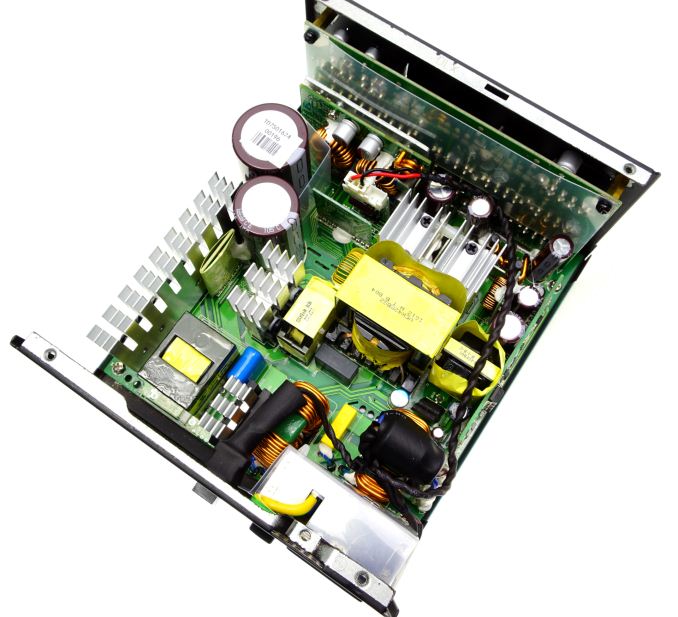
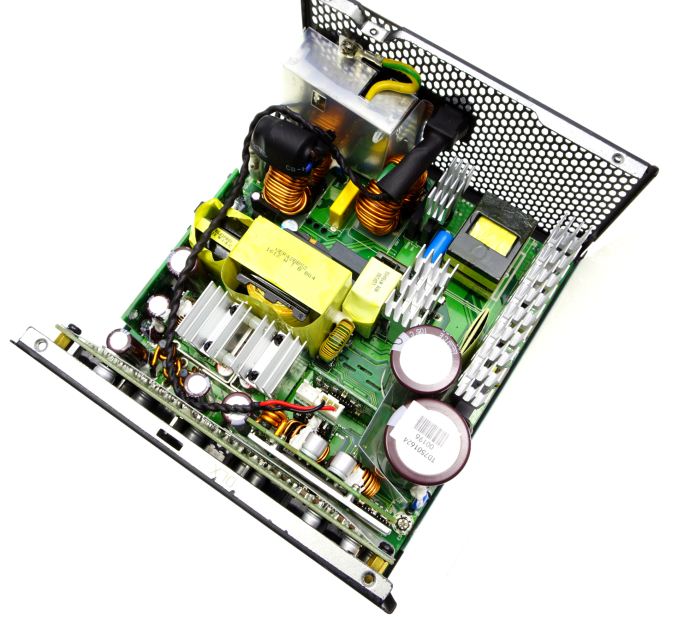
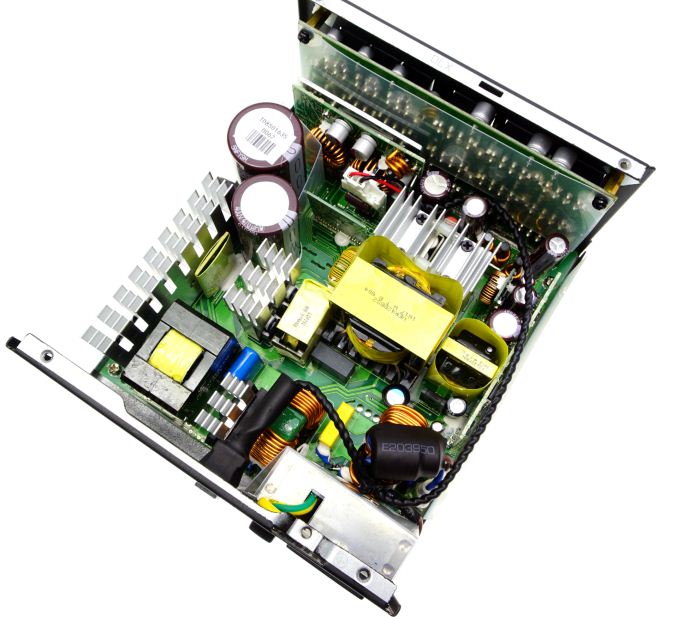
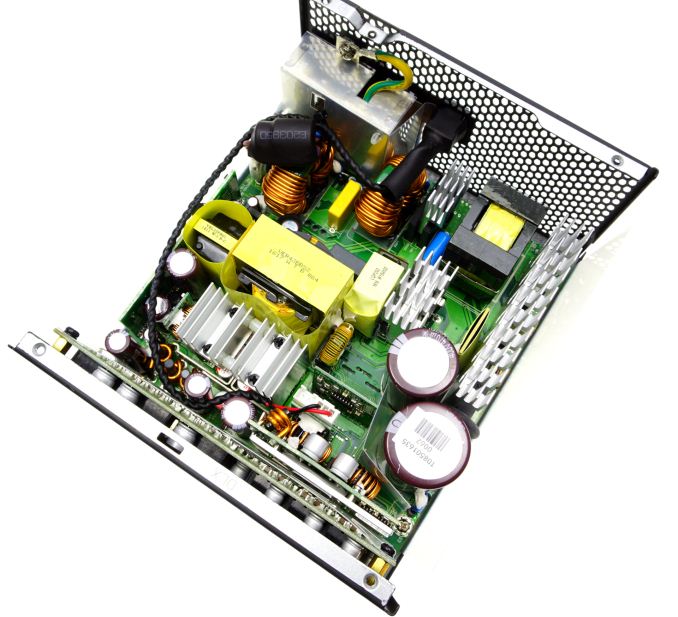








86 Comments
View All Comments
Laststop311 - Monday, April 10, 2017 - link
I have a crucial mx 300 2TB for my storage and im waiting for 256GB optane SSD's to switch that over the boot drive and most used apps. I am not bothering with the caching version.Laststop311 - Monday, April 10, 2017 - link
o and i got it the 2tb ssd or 476 out the door here on sale https://www.superbiiz.com/detail.php?p=2050MX3SD1&...Laststop311 - Monday, April 10, 2017 - link
no optical drive all drive cages removed for max airflow as well. I am the most proud of the build if u cant tell it's in my bedroom and i cant even hear it when i sleep. I'm so ecstatic.Laststop311 - Monday, April 10, 2017 - link
email me is u need help building this exact PC i promise there isnt a single person that wont be thrilled to have it jtarmeni1 (AT) (g)(mail(dot)comLaststop311 - Monday, April 10, 2017 - link
and dont bother with any ram above 3400mhz cas 14 3400mhz provides the best performance of all ram trust me i tried.Laststop311 - Monday, April 10, 2017 - link
the higher timings negates the performance and u spend more money, until they release 3600 cas 14 3400 cas 14 is the fastestjo-82 - Monday, April 10, 2017 - link
Am i the only one who finds 40 dB(A) @ 50% load (300W) out of the question?Exodite - Tuesday, April 11, 2017 - link
No, though I've come to the realization that you have to treat dB measurements as an internal metric for each article/site and not an universal truth.Variations due to measuring methodology, equipment and ambient sound level means dB measurements don't compare well across different reviewers/sites.
Personally I prefer always-on equipment such as case and CPU fans to idle <20 dB and load noise, including GPUs, <30-35 dB so I reckon I'm in a similar position. Some reviewers, a surprising number even, have ambient sound levels higher than I'd tolerate even a fully loaded computer to make.
More than that dB measurements fail to pick up sound characteristics. A great fan/cooler can be tolerable at higher dB levels because the only real sound tends to be from moving air, a soft "whoosh" if you will. The bad ones add ticking or grinding, for example I find the default Radeon fans to be completely intolerable at any load level. And even fanless equipment may be saddled with electrical noise that cut right through the case and ambient sound.
In the end you really have to listen yourself to make a judgment and if that's not an option rely on a comparison to a unit you've heard yourself that's been tested by the same reviewer/under the same conditions.
Laststop311 - Tuesday, April 11, 2017 - link
u wont be disappointed with a 750 watt seasonic prime. The fans dont even turn on until u hit 375 watts of power draw. Which basically means even maxing out ur cpu isnt enough to turn them on. You have to play a game and most games utilize like on averahe 80% of ur cpu and yea the fan on the psu is dead silent when it does spin. Concentrate and getting a quiet GPU. Get a triple slot with GPU with a HUGE heatsink and adjust the fan profile till right before you hear it. The highe heatsink makes yup for the large speed. I really like the triple slot gpu's with 3x 100mm FDB fans plus nh d15s noctual cooler using liquid metal paste and the awesome titanium rated seasonic psu. With 11 blade fractacl venturi high flow fans with thge drave cages inside removed. this way you need no static pressure so even on low speeds the air pushes deep into the case and since its 2x 140mm inttake 1 140mm GP14 fractacl exhaust yu get positive pressure meaning you only have to clean the case once every 2-3 years as only microscopic particloes get in. You can run the fasn all at the lowest speed before you hear it even with good overclocks. I sleep right next to the bed thats how quiet it. Seriously I will facetime you thru the build for 45 buvks an hour. And teach you all the tricks to deaden every vibration while keeping all ur components in the 70C's or lessLaststop311 - Tuesday, April 11, 2017 - link
its the best build in the world if u want silence and still a lot of power, yes no9t the max power but if you all u care about is gaming at 1080 with 144hz which imo is better then 2560x1440 and 60hz by a far as well a 4k at 30-60hz by far